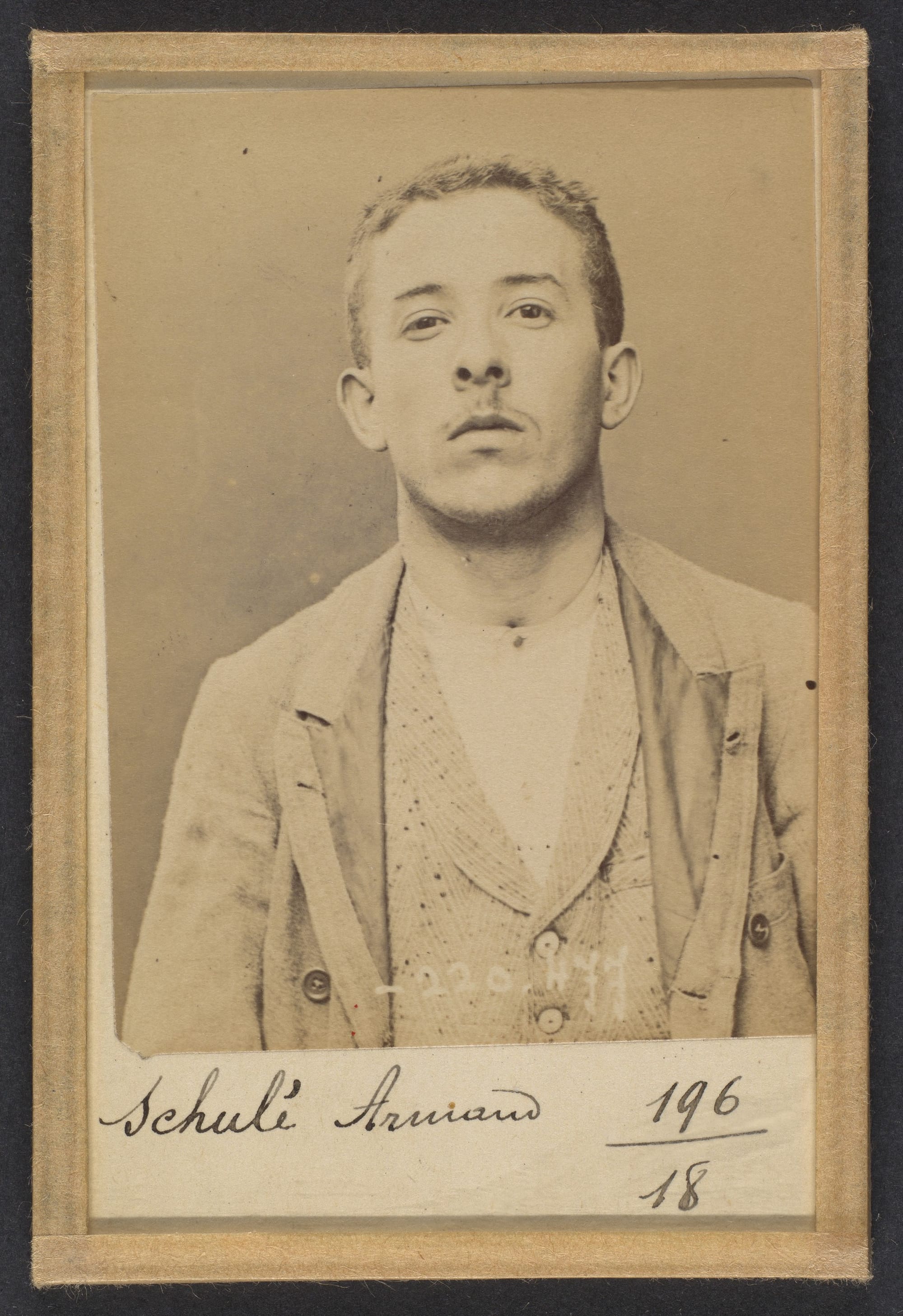A system of identification

Here's a thing I never wondered about before I saw this picture: after photography was invented, when did the technology start being used for mugshots? Apparently, in the early 1890s, in a system pioneered by Alphonse Bertillon:
In the early 1890s Paris was subject to a wave of bombings and assassination attempts carried out by anarchist proponents of "propaganda of the deed." One of Bertillon’s greatest successes came in March 1892, when his system of identification led to the arrest of an anarchist bomber who went by the name Ravachol (2005.100.375.348). The publicity surrounding the case earned Bertillon the Legion of Honor and encouraged police departments around the world to adopt his anthropometric system.
More:
- The Met archive has more of these images (more than 400 of them), if you're curious: Mugshots from French Police Files
- And here's that picture of Ravachol: Ravachol. François Claudius Kœnigstein.
Linguists Find Proof of Sweeping Language Pattern Once Deemed a ‘Hoax’
By Cody Cottier. Scientific American.
This article is interesting both for the science it explores (rigorously reexamining with the claim that the Inuit have a host of words for 'snow'), and for the care it takes to avoid a sensational oversimplification of the study's findings (that “language determines how we perceive things, causing speakers of different languages to experience the world in radically different ways”). Instead, the scientists offer something a little more nuanced:
"in Mair’s opinion, this study supports a softer claim: our brains all share the same basic machinery for perceiving the world, which language can subtly affect but not restrict. 'It doesn’t determine,' he says. 'It influences.'"
VIDEO: A brief history of powerful gemstone amulets
By The Victoria and Albert Museum
The Victoria and Albert Museum is my favorite museum I've never been to. They make much of their collection available digitally, and they produce these short, charming, informative videos that offer a window into the past:
Bewitching and beautiful, spiritual and sparkling – colourful stones, crystals and gems have been used throughout human history for devotion and decoration. For centuries, these natural curiosities have been gathered from the landscape and crafted into intimate objects which often have amuletic (protective), or healing properties when worn, carried, or held.